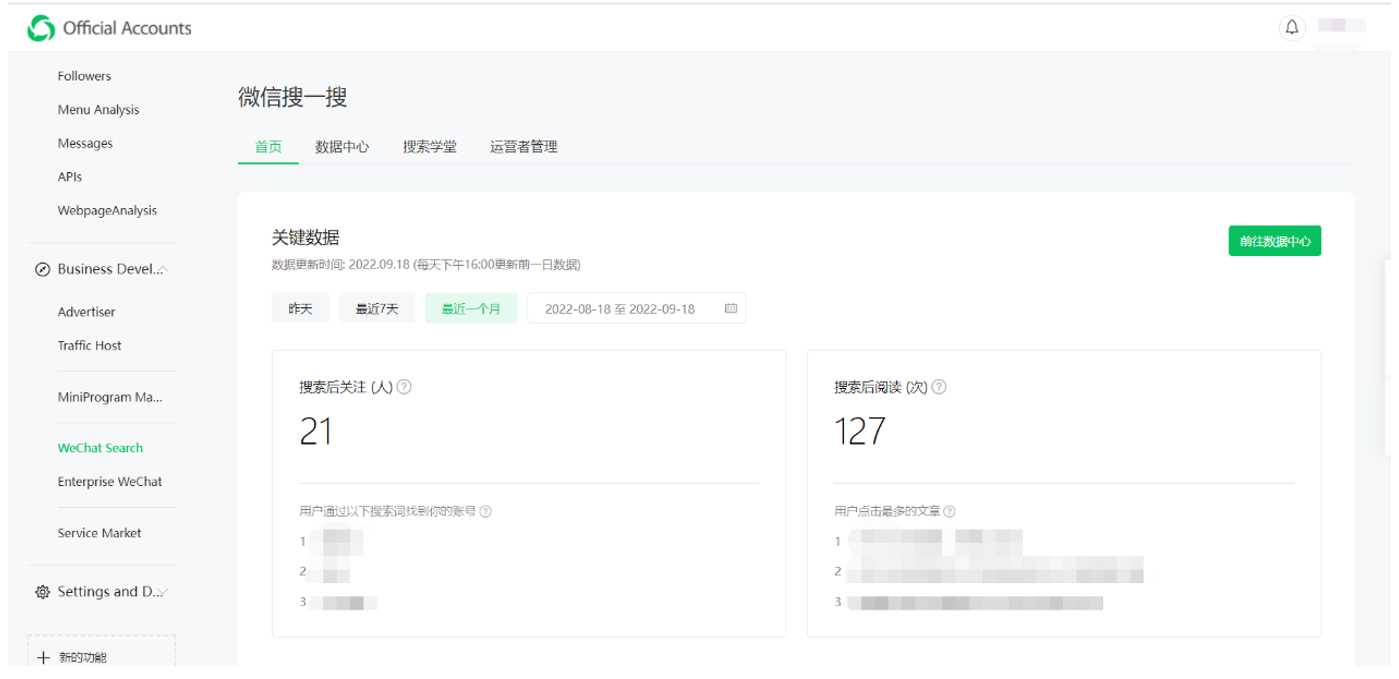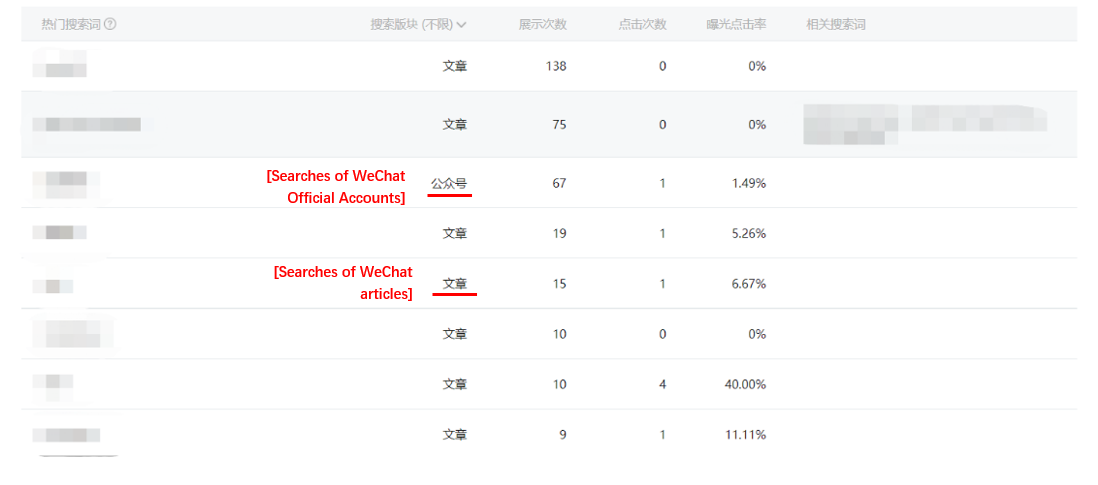WeChat Search Introduces New Metrics to its Analytics
At the start of 2022, WeChat Search—WeChat’s in-app search function—reached 700 million monthly active users (MAU), continuing its trajectory as a search engine rival to the enormously popular Baidu.
But WeChat Search has evolved and is operating more like a portal, allowing its users to discover high-quality content and services available across WeChat’s ecosystem. And from the many entry points around the app, searches initiated by users have translated into traffic for—and higher engagement of—other WeChat products.
This has made WeChat’s algorithm and search results quite unique compared to other search engines. While largely based on an individual’s search habits and preferences, its algorithm has no clear pattern, which poses a challenge to site owners when optimizing content for traffic on WeChat Search.
But fret not! In September 2022, WeChat Search introduced new metrics to its analytics tool in the WeChat Official Account backend, which can help you better understand your content performance and searchability relative to your target keywords.
Here, explore the two new metrics in WeChat Search’s analytics and common FAQs about getting started with analytics in your WeChat Official Account backend.
Note: Although WeChat Search connects users to the many distinct products within WeChat’s ecosystem, its analytics (as of now) only collects data from searches related to WeChat articles and WeChat Official Accounts.
WeChat Search analytics: User interface
What are the new metrics in WeChat Search’s Analytics?
User Engagement and Traffic Source
User Engagement and Traffic Source reveals the total number of times a link to your content was seen by users (i.e., impressions) via searches of WeChat articles or WeChat Official Accounts. It also uncovers the click-through rate (CTR) per traffic source and the number of new followers gained between those two sources.
WeChat Search analytics: User Engagement and Traffic Source
Content Search Performance
Content Search Performance details your most searched articles and content within a time period and the keywords they ranked for via searches of WeChat articles and WeChat Official Accounts.
WeChat Search analytics: Content Search Performance
WANT DIGITAL INSIGHTS STRAIGHT TO YOUR INBOX?
Common FAQs When Getting Started on WeChat Search Analytics
FAQ #1: Why can’t I find my WeChat Official Account?
Ensure you are searching for your WeChat Official Account on WeChat Search by its full account name. If you still cannot find it through search, it might be due to the following reasons:
- If your Official Account just launched, it will take a while for WeChat Search to collect all its information. Generally, you should be able to search for your Official Account one full day after launch.
- Your Official Account settings were set to the “forbidden search” status by your account operator. To cancel this, head into: “WeChat public platform” > “Settings and development” > “Official account settings” > “Function/privacy”.
- Your Official Account was excluded from search due to a failed or incomplete account registration, blocked/frozen for violations, or cancelled by one of your account operators.
If none of the above apply to you, you can submit an appeal to the WeChat Official Account of WeChat’s Search Assistant service, and a member of their support team will be in touch.
FAQ #2: Why can’t I find my articles via WeChat Search?
From content quality to the authority of your Official Account, myriad factors can affect how your article ranks on WeChat Search’s results pages. But first and foremost, the actual content in your articles must be compliant with WeChat Search’s guidelines.
As such, if you encounter any of the following issues when searching for your articles(s), you can get in touch with WeChat Search Assistant service via your Official Account:
- Your article(s) cannot be searched by title in the article search function
- Your article(s) cannot be searched and located within your Official Account
- Your article(s) cannot be searched after migrating your Official Account
FAQ #3: When searching for my official account, why does its menu appear?
To help users find intended results faster and understand a brand’s information, products, or services at a glance, WeChat Search intelligently displays the menu options of the most relevant Official Account on its SERP based on user search terms.
This is entirely automated on WeChat’s end and cannot be modified.
***
Among the critical areas for optimization on WeChat Search will be its search results pages, so you can expect WeChat to expose Search across more entry points around the app. In turn, stay on top of its analytics tool to help you optimize your content quality and improve your ranking potential on WeChat Search.









